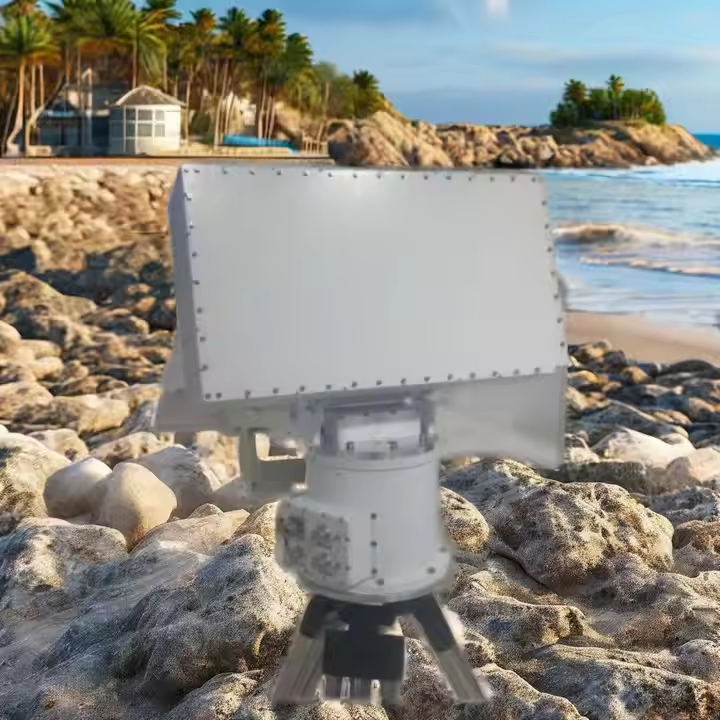現代レーダー技術とその応用の理解
レーダー系統は、さまざまな環境において物体を検出、追跡、監視する方法を革新してきました。軍事用途から気象予測まで、これらの高度な電子系統は多くの業界や用途において不可欠となっています。無線波を送信し、その反射を分析することにより、レーダー系統は物体の位置、速度および特性に関する重要な情報を提供します。
レーダー技術の進化により、ますます専門的かつ効率的な系統が開発され、それぞれが特定の運用要件を満たすように設計されています。現代のレーダー系統には、高度な信号処理、人工知能、最先端の素材が組み込まれており、かつてない精度と信頼性を実現しています。
レーダー系統の主なカテゴリ
パルスレーダー系統
パルスレーダーシステムは、最も一般的で多用途なレーダー構成の一つです。これらのシステムは、短く強力な無線波のパルスを送信し、エコーが戻ってくるまでの時間を測定することによって動作します。パルス間の間隔を利用して、システムはターゲットの距離と方向を非常に高い精度で測定することが可能です。
現代のパルスレーダーシステムは、高度なパルス圧縮技術を用いて検出能力を高めながら、比較的低いピーク出力で動作することが可能です。これにより、移動型機器や衛星搭載システムなど、電力効率が重要な用途に特に適しています。
連続波レーダーシステム
連続波(CW)レーダーシステムは、途切れることのない無線信号を送信するため、ドップラーシフト分析を通じてターゲットの速度を測定するのに非常に適しています。このようなレーダーシステムは、交通取り締まりにおける速度監視やスポーツ分析など、正確な速度測定を必要とする用途に優れています。
高級CWレーダーシステムには、周波数変調を組み込むことで、従来の距離測定における限界を克服し、民生用および軍事用の両方で非常に多用途なシステムを構築することができます。
特殊レーダー応用
気象レーダーシステム
気象レーダーシステムは、大気状態の検出および追跡のために特別な構成を採用しています。これらのシステムはドップラー効果および二重偏波技術を使用して、降水量、風のパターン、および嵐の特性を測定します。収集されたデータにより、気象学者は正確な予報を作成し、迅速な気象警報を発令することができます。
最新の気象レーダーシステムは、異なる種類の降水を区別し、粒子の大きさを測定し、嵐の動きを非常に正確に追跡することができます。この機能により、深刻な気象現象の予測および対応能力が大幅に向上しました。
軍事監視レーダー
軍用レーダーシステムは、入手可能な中でも最も高度なレーダー技術を代表しています。これらのシステムは、多くの場合複数のレーダー方式と高度な信号処理技術を組み合わせ、包括的な戦場認識能力を提供します。電子対抗対策(ECCM)や低傍受確率(LPI)などの機能により、これらのシステムは戦闘状況において非常に高い効果を発揮します。
最新の軍用レーダーシステムには、フェーズドアレイ技術と人工知能が組み込まれており、ジャミングや干渉に耐性を維持しながら、複数の目標を同時に追跡できます。
レーダー技術における新興トレンド
認知レーダーシステム
認知レーダーシステムは、レーダー技術の次の進化段階を示しています。これらのシステムは人工知能と機械学習を使用し、環境条件や任務要件に基づいてリアルタイムで動作を適応させます。この適応能力により、検出精度が大幅に向上し、誤報が削減されます。
認知機能を統合することで、レーダーシステムは自動的に性能を最適化し、複雑な環境下でもリソースの効率的な利用とターゲットの識別能力を向上させることができる。
ソフトウェア定義レーダー
ソフトウェア定義レーダーシステムは、プログラマブルハードウェアプラットフォームを通じて前例のない柔軟性を提供する。この方式により、ハードウェアの変更を必要とすることなく、新しい要件や脅威に迅速に適応することが可能になる。この技術により、単一のレーダーシステムであっても、ソフトウェア構成を更新するだけで複数の機能を実行できるようになる。
これらのシステムは、民間および軍事用途の両方で顕著な多用途性を示しており、進化する運用要件に対して費用効果の高い解決策を提供する。
統合およびネットワーキング機能
マルチスタティックレーダーネットワーク
マルチスタティックレーダーネットワークは、レーダーシステムの導入において重要な進歩を示しています。これらのネットワークは、複数の送信機と受信機が協調して動作し、拡大されたカバー範囲と改良されたターゲット検出能力を提供します。このようなシステムの分散型構造により、ジャミングや干渉に対して非常に高い耐性を持ちます。
高度なネットワーキングプロトコルとデータ融合アルゴリズムにより、これらのシステムはシームレスに情報を共有し、個々のレーダー装置の能力を超える包括的な監視画像を作り出します。
IoT統合
レーダーシステムとモノのインターネット(IoT)の統合により、データ共有やシステム制御の新しい可能性が開かれました。この接続性により、遠隔監視、自動メンテナンス予約、およびレーダーネットワーク全体にわたるリアルタイムの性能最適化が可能になります。
IoT対応レーダーシステムは、スマートシティ、自律走行車両、高度な産業用オートメーションアプリケーションの開発に貢献しています。
よく 聞かれる 質問
現代のレーダー方式の最大探知距離はどのくらいですか?
レーダー方式の最大探知距離は、送信機の出力、アンテナ設計、大気条件などの要因によって大きく異なります。軍用の長距離監視レーダー方式では、300キロメートルを超える距離にある目標を検出できる場合がありますが、気象レーダー方式は通常150〜200キロメートルの範囲内で効果的に運用されます。
レーダー方式は異なる種類の目標をどのように識別しますか?
レーダー方式は、ドップラー処理、断面積解析、パターン認識などのさまざまな技術を使用して目標を区別します。高度な方式では、機械学習アルゴリズムを採用してレーダー反射波を分析し、目標の特徴的なシグネチャーに基づいて分類します。
気象条件はレーダー性能に影響しますか?
はい、気象条件はレーダーの性能に大きく影響することがあります。雨、雪、大気の乱れなどにより信号の減衰が起こり、誤った戻り信号が発生することもあります。最新のレーダー方式では、こうした影響を最小限に抑え、悪天候下でも信頼性の高い動作を維持するために、高度な信号処理や複数周波数が利用されています。

